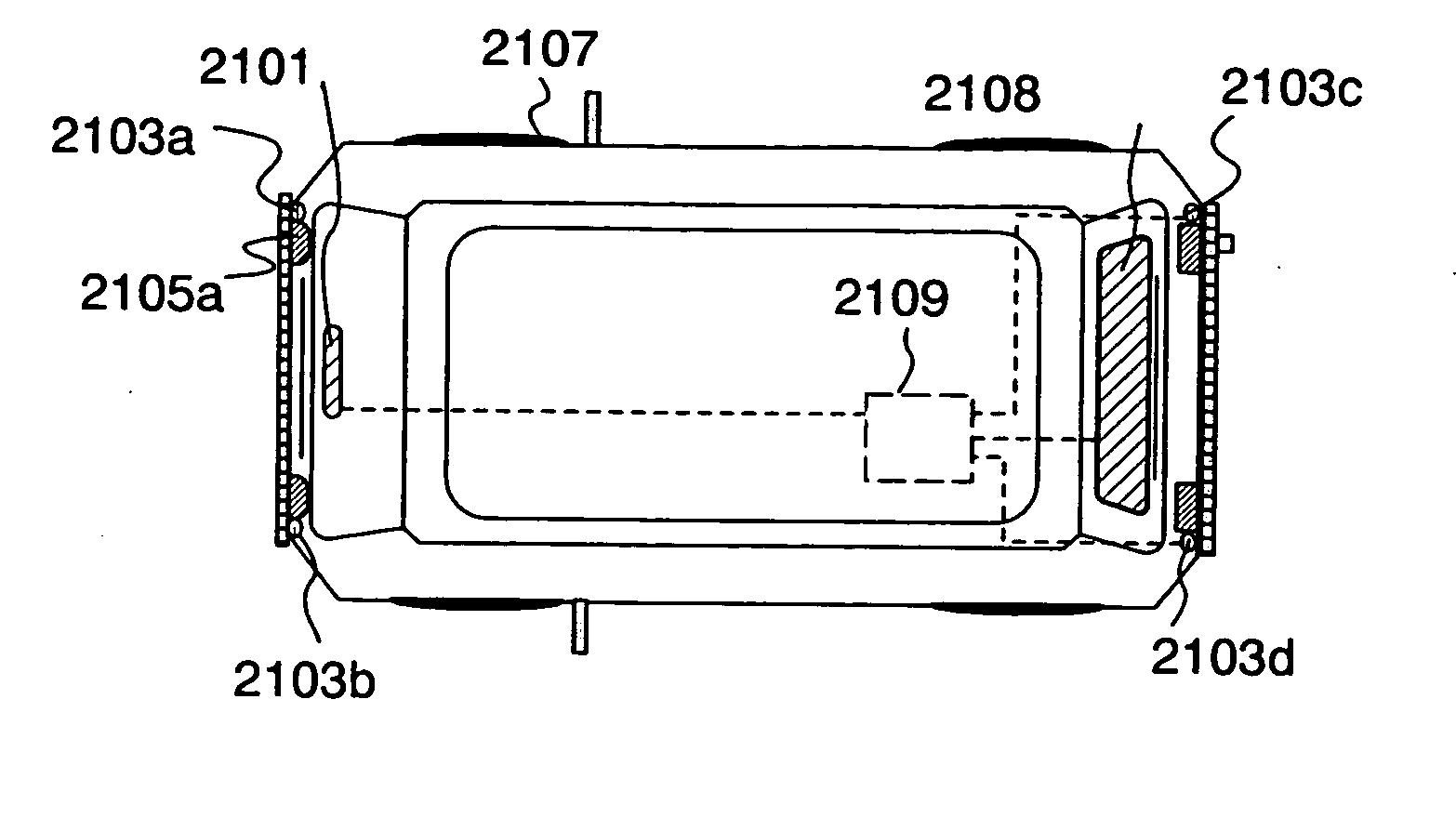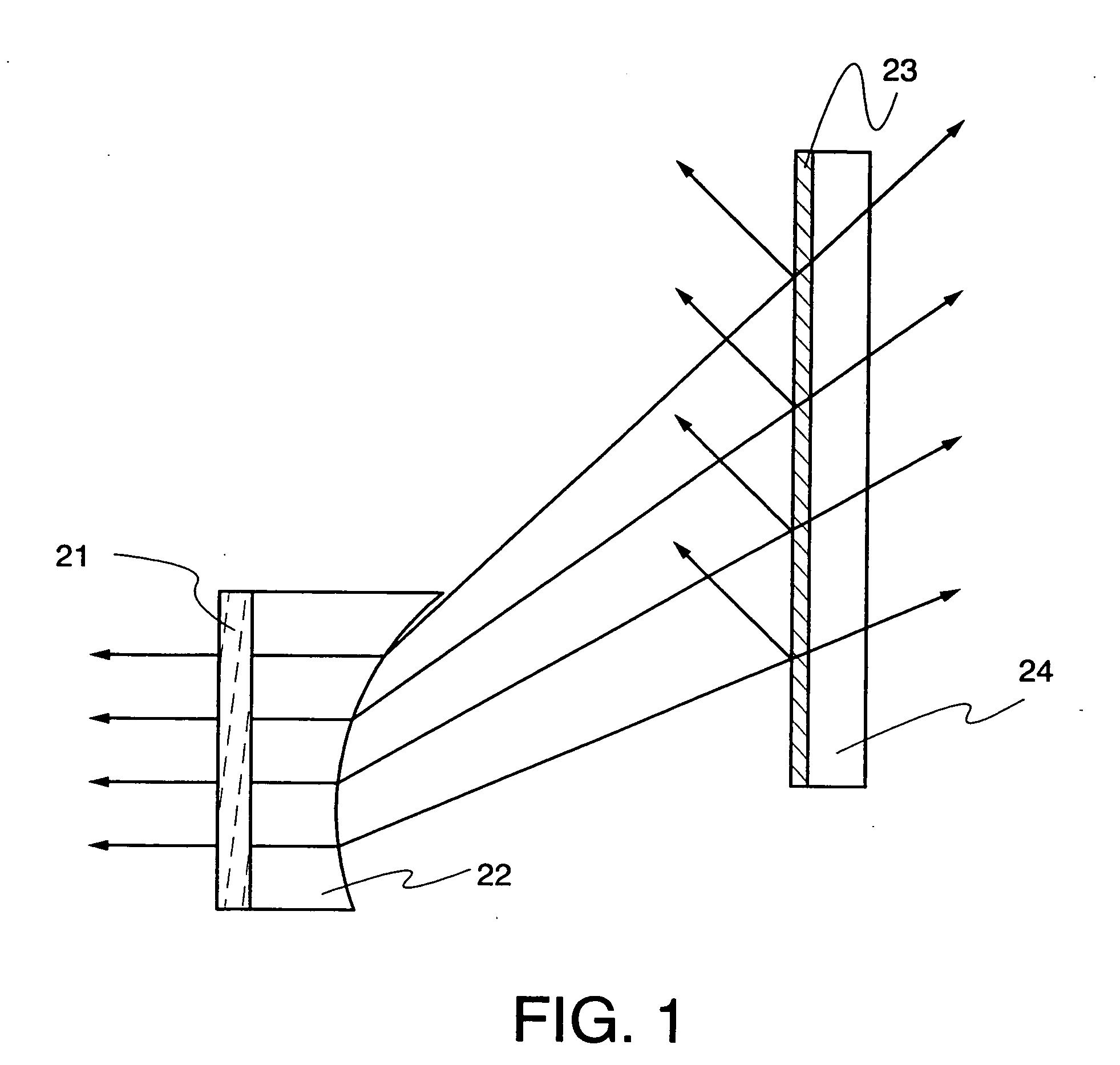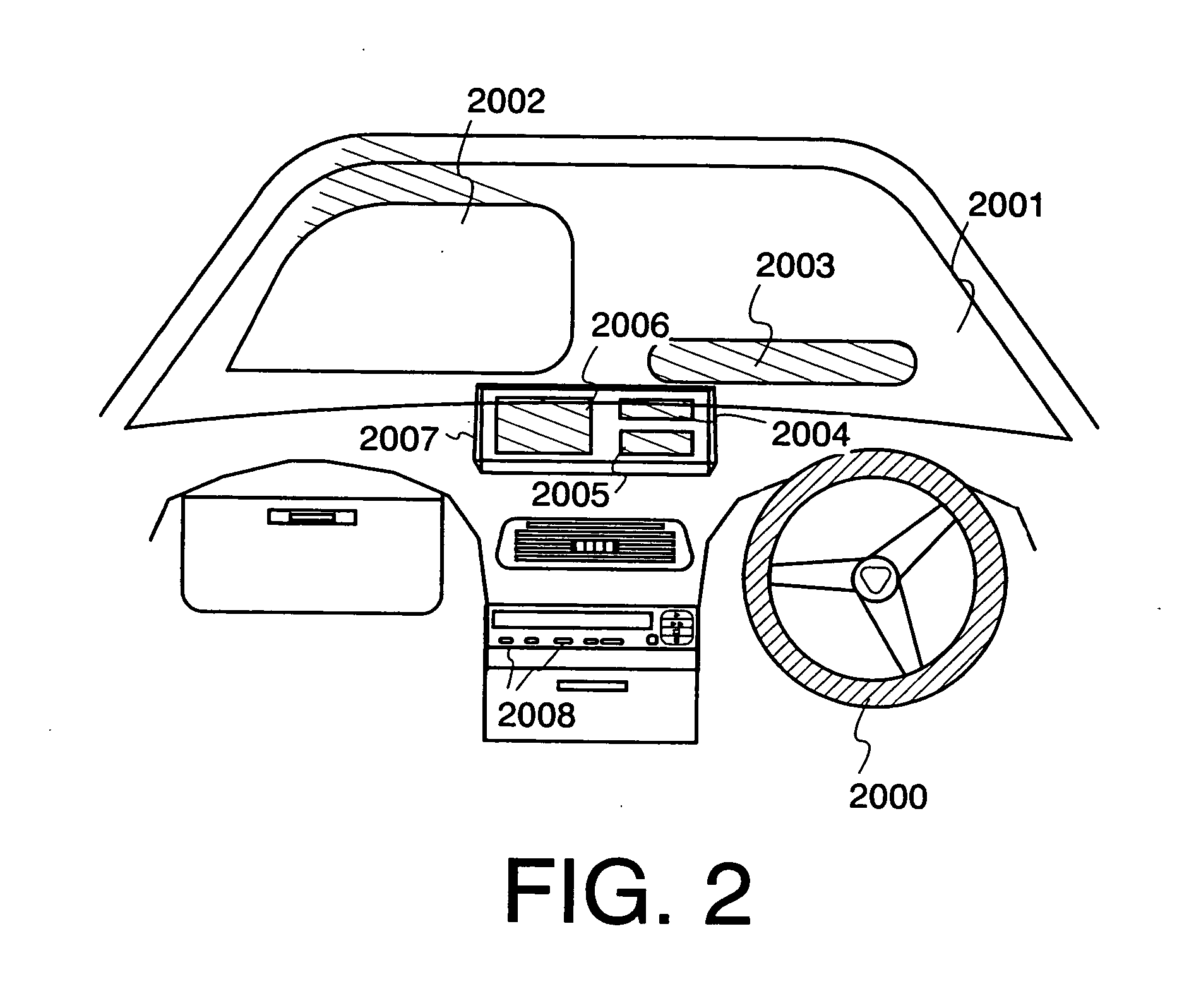Light-emitting device including a dual emission panel
- Summary
- Abstract
- Description
- Claims
- Application Information
AI Technical Summary
Benefits of technology
Problems solved by technology
Method used
Image
Examples
example 1
[0028] In Example 1, a specific example of a display device explained in Embodiment is explained with reference to FIGS. 2 to 4C.
[0029]FIG. 2 shows an example in which a front glass is used in a vehicle as a display device. FIG. 2 is an internal view of a vehicle. Reference numeral 2000 denotes a handle; 2001, a front glass; 2007, an interior; and 2008, operation buttons. A display device according to the invention is provided to the interior 2007. Images are displayed on screens of a display portion A 2002, a display portion B 2003, a display portion C 2004, a display portion D 2005, and a display portion E 2006. Further, the front glass 2001 corresponds to the support 24 described in Embodiment.
[0030] A light-emitting device included in the interior 2007 is a dual emission device. The dual emission device and the front glass 2001 compose the structure explained in Embodiment. A light-emitting device is capable of dual emission. Light emitted from the opposite side of a driver is...
example 2
[0045] An example of a structure in which a reverse image from a light-emitting device 21 is projected on a semi-transmissive film 23 via one optical device 22 is explained in Example 1. Alternatively, a structure in which a plurality of optical devices such as mirrors is sandwiched between the light-emitting device and the semi-transmissive film can be adopted. The structure is explained hereinafter with reference to FIGS. 7A and 7B.
[0046]FIG. 7A shows a structure in which three mirrors 72, 73, and 74 are sandwiched between a light-emitting device 71 and a semi-transmissive film 75. The number of mirrors is not limited to three as long as it is an odd number. Since an image obtained from one side of the light-emitting device 71 (left side in FIG. 7A) is an erect image, and an image obtained from another side (right side in FIG. 7A) is a symmetrical reverse image, people at one side (left side in FIG. 7A) can directly see the erect image from the light-emitting device 71. An image ...
example 3
[0051] An EL layer in an EL element is generally formed to be a thin film to make it easier for current to apply through the EL layer. In order to obtain uniform light emission, it is important to deposit the EL layer to have smoothness. In case that an EL layer is formed by vapor deposition over a film without smoothness, a deposited film of an EL layer cannot cover irregularities, and pinholes are often produced. In this state, an anode and a cathode are susceptible to be short-circuited, and it causes point defects in a display device.
[0052] An ITO film deposited by sputtering generally used as a transparent electrode is difficult to be deposited to have smoothness, since the ITO film is susceptible to be a poly crystal and produces protrusions due to the crystal grain growth. In case of using such the ITO film, a deposited film of an EL layer is required to be thick to cover protrusions, and it causes the increase of a drive voltage. Further, when the EL layer becomes thick, th...
PUM
 Login to View More
Login to View More Abstract
Description
Claims
Application Information
 Login to View More
Login to View More - R&D
- Intellectual Property
- Life Sciences
- Materials
- Tech Scout
- Unparalleled Data Quality
- Higher Quality Content
- 60% Fewer Hallucinations
Browse by: Latest US Patents, China's latest patents, Technical Efficacy Thesaurus, Application Domain, Technology Topic, Popular Technical Reports.
© 2025 PatSnap. All rights reserved.Legal|Privacy policy|Modern Slavery Act Transparency Statement|Sitemap|About US| Contact US: help@patsnap.com



